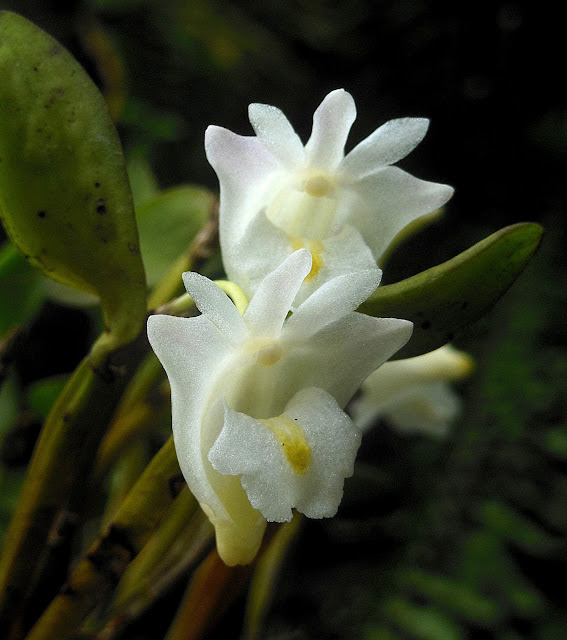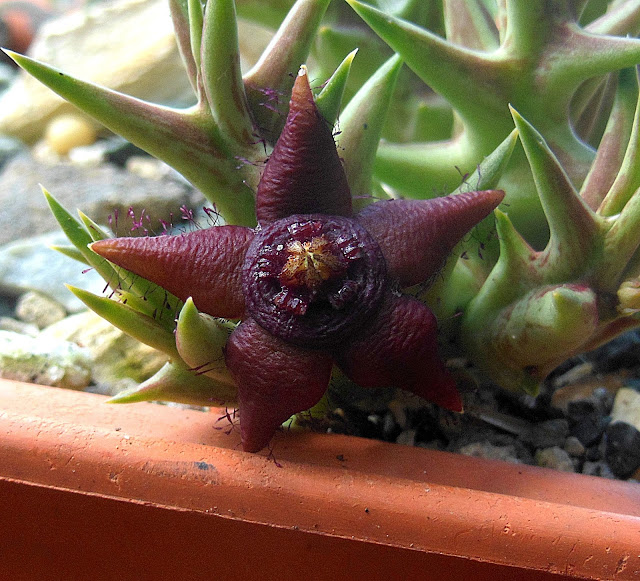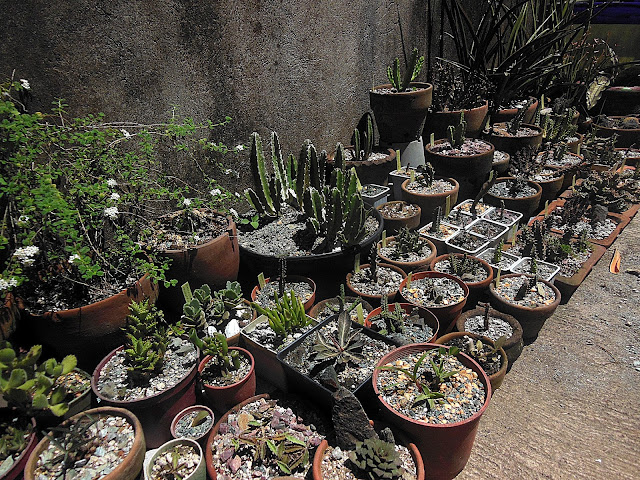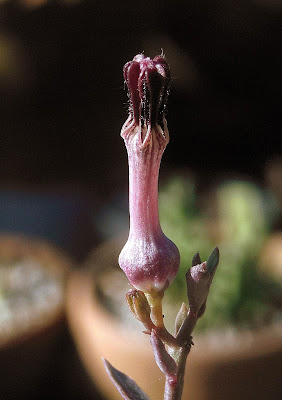Pinalia xanthocheila showing off

Widespread from Myanmar and southern Thailand to Malaysia, Sumatra, Java, Borneo, and the Philippines in the provinces of Aurora, Laguna, Nueva Vizcaya, Quezon, and Zambales (all on Luzon), Pinalia xanthocheila is an epiphyte (sometimes also lithophytic) on riverine or mixed dipterocarp forests at elevations from near sea level to 1600 m, in part-shade to bright light, but not full sun. These plants appear to have an affinity on growing either on thin layers of humus deposits or mosses, or on the root masses of epiphytic ferns. The plants usually flower twice a year, between January to March, and then again anytime from September to November. In contrast to typical xanthocheilas, the side lobes on the labellum are greenish-yellow instead of red. Indeed, the absence of anthocyanin pigments on the flowers can be construed as albinism, but thin margins of red can still be found on the tips of the pale green, reflexing bracts. A healthy plant can produce up to 6 active inflorescences a...












